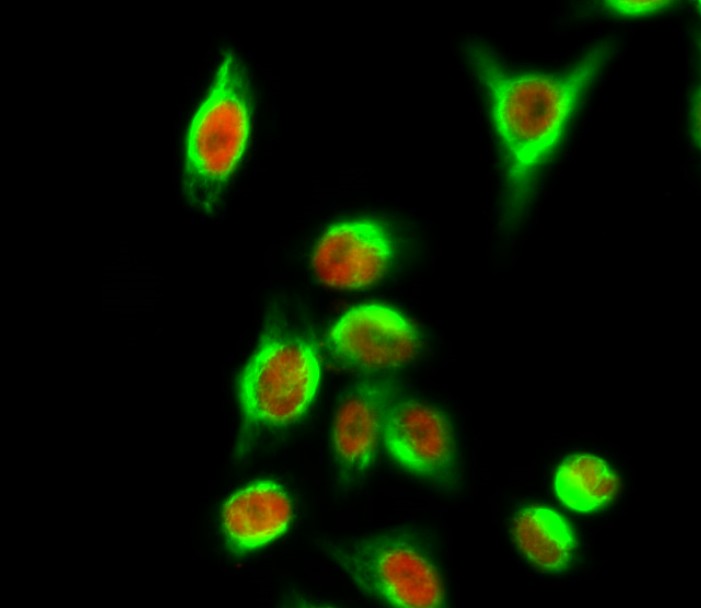Total Cytochrome c Cell-Based Colorimetric ELISA Kit
- Catalog No.:KA4067C
- Applications:ELISA
- Reactivity:Human;Mouse;Rat
- Gene Name:
- CYCS
- Human Gene Id:
- 54205
- Human Swiss Prot No:
- P99999
- Mouse Swiss Prot No:
- P62897
- Rat Swiss Prot No:
- P62898
- Storage Stability:
- 2-8°C/6 months
- Other Name:
- Cytochrome c
- Detection Method:
- Colorimetric
- Background:
- disease:Defects in CYCS are the cause of thrombocytopenia type 4 (THC4) [MIM:612004]; also known as autosomal dominant thrombocytopenia type 4. Thrombocytopenia is the presence of relatively few platelets in blood. THC4 is a non-syndromic form of thrombocytopenia. Clinical manifestations of thrombocytopenia are absent or mild. THC4 may be caused by dysregulated platelet formation.,function:Electron carrier protein. The oxidized form of the cytochrome c heme group can accept an electron from the heme group of the cytochrome c1 subunit of cytochrome reductase. Cytochrome c then transfers this electron to the cytochrome oxidase complex, the final protein carrier in the mitochondrial electron-transport chain.,function:Plays a role in apoptosis. Suppression of the anti-apoptotic members or activation of the pro-apoptotic members of the Bcl-2 family leads to altered mitochondrial membrane permeability resulting in release of cytochrome c into the cytosol. Binding of cytochrome c to Apaf-1 triggers the activation of caspase-9, which then accelerates apoptosis by activating other caspases.,online information:Life shuttle - Issue 76 of November 2006,PTM:Binds 1 heme group per subunit.,similarity:Belongs to the cytochrome c family.,
- Function:
- DNA catabolic process, endonucleolytic, generation of precursor metabolites and energy, DNA metabolic process, DNA catabolic process, DNA fragmentation involved in apoptosis, apoptosis, activation of caspase activity, cell structure disassembly during apoptosis, nucleus organization, cell death, activation of caspase activity by cytochrome c,macromolecule catabolic process, regulation of cell death, positive regulation of peptidase activity, programmed cell death, energy derivation by oxidation of organic compounds, death, cellular component disassembly, electron transport chain, apoptotic nuclear changes, regulation of apoptosis, regulation of programmed cell death, positive regulation of catalytic activity, positive regulation of caspase activity, regulation of caspase activity, positive regulation of molecular function, cellular macromolecule catabolic process, cellular respiration, r
- Subcellular Location:
- Mitochondrion intermembrane space. Loosely associated with the inner membrane.
- June 19-2018
- WESTERN IMMUNOBLOTTING PROTOCOL
- June 19-2018
- IMMUNOHISTOCHEMISTRY-PARAFFIN PROTOCOL
- June 19-2018
- IMMUNOFLUORESCENCE PROTOCOL
- September 08-2020
- FLOW-CYTOMEYRT-PROTOCOL
- May 20-2022
- Cell-Based ELISA│解您多样本WB检测之困扰
- July 13-2018
- CELL-BASED-ELISA-PROTOCOL-FOR-ACETYL-PROTEIN
- July 13-2018
- CELL-BASED-ELISA-PROTOCOL-FOR-PHOSPHO-PROTEIN
- July 13-2018
- Antibody-FAQs

